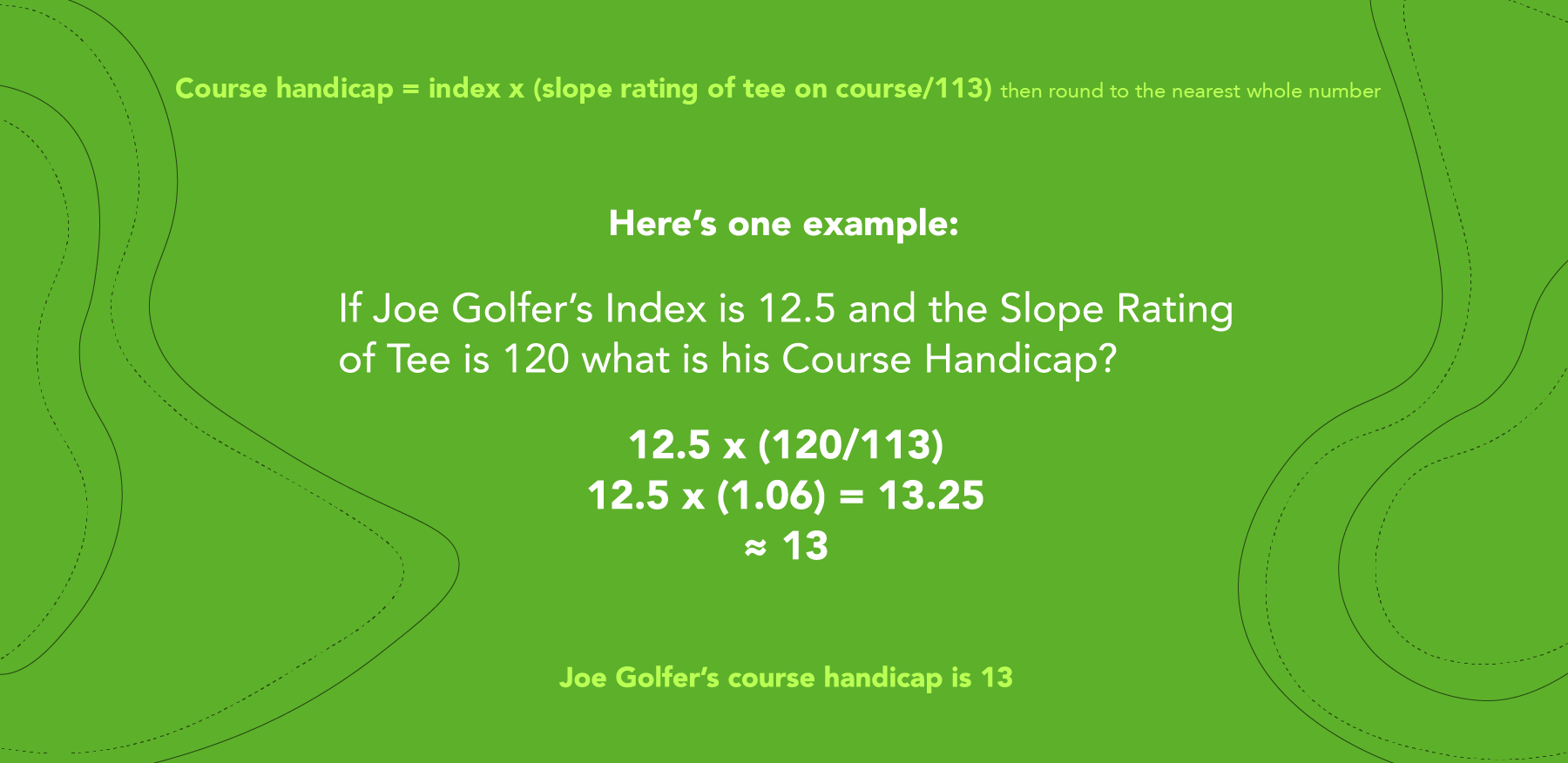
18 Feb Understanding Golf Course Handicaps
So, what exactly is a golf course handicap, what is it used for, and how is it calculated? Read on. We’ll tell you everything you need to know. And then some.
A golf course handicap is the number of strokes a player needs to play to the level of scratch, or zero-handicap golf, on a particular course and on a particular set of tees. What is a course handicap (sometimes called a playing handicap), is the actual number of strokes a golfer receives on each specific course. The course handicap is determined by using charts physically located at the golf course where the golfer plays.
There’s something else called a handicap index, which is really just the measurement of a golfer’s potential ability on a course of standard playing difficulty. Based on the difficulty of a particular course, the golfer uses the handicap index to figure out his or her handicap.
How to calculate a course handicap?
Honestly, the easiest way to determine course handicap is to use the calculator on usga.org, or one of the many calculators available on the internet.
An alternative way is to multiply the handicap index by the slope rating of the course you’re going to play and divide the number by 113 (that’s the standard difficulty rating). Then, round off that number up or down to the nearest whole number. The formula looks like this:
Your handicap index multiplied by slope rating of tees played divided by 113

For example, William’s handicap index is 15.2 and he’s playing a course with a slope of 126. The formula is 15.2 x 126 divided by 113. The answer to this example is 16.9. William’s course handicap is therefore 17 (rounded up to the nearest whole number). Notice the slope of the course in this example is a bit higher than the standard slope of 113 (as in, this course is more difficult than the standard course), so William gets extra strokes. William’s handicap index of 15.2 was increased to a course handicap of 17.
In other words, take your handicap index, get the slope rating of the golf course you’re going to play, and convert that handicap index into a course handicap. So, what is a course handicap – what is your course handicap – is what determines how many handicap strokes you receive.
Note: Golfers must be members of an authorized golf club to establish and maintain a handicap index (most public and private courses are authorized).
What does all this mean?
Your course handicap will give you the number of handicap strokes you can take during your round of play at a particular course and at which particular tees. Those handicap strokes are used during the round to convert your gross score into a net score. You can then either apply those handicap strokes on the appropriate holes (for example, if your course handicap is 7, you can take one handicap stroke on the seven highest-rated handicap holes), or you can deduct your course handicap from your gross score at the end of the round (if your course handicap is 7 and you shoot an 88, then your net score is 81).
Got it? Good. Because as of January 1, 2020, the new Rules of Handicapping began rolling out in the United States. The World Handicapping System (WHS) is the result of a joint effort between the United States Golf Association (USGA) and The R&A, in collaboration with national associations, golf clubs and golfers from around the world, and in addition to much feedback and support provided by the Allied Golf Associations (AGA).
Why WHS?
The WHS is designed to finally unite the six different handicapping systems used around the world and offer a single measure for determining a player’s ability. This new system allows golfers with varying skill levels to play anywhere in the world and compete on a basis that’s fair — in any format, on any course. The WHS is also considered to be easy to understand and put into practice, meets the range of needs of golfers, golf clubs and golf authorities all around the world, and can conform to all golfing cultures.
Will this benefit you? Yes, for starters, the new handicap index will be more responsive to good scores by averaging the eight best scores out of your most recent 20 (in the past, it was 10 out of 20 with a .96 multiplier). For most golfers in the U.S., the WHS will change less than one stroke.
According to the USGA, here are five important things to know about the WHS:
- The handicap index calculation is changing.
- You will have what’s called a playing handicap.
- Net double bogey will replace ESC.
- You will have more responsive handicap index updates.
- Safeguards have been added to protect your handicap index.
For more information on the WHS, visit usga.org/whs. For questions regarding your handicap index or scoring record, contact the handicap committee at your home club or the AGA near you. For exclusive access to the largest selection of tee times in the world, download the Supreme Golf app.




Sorry, the comment form is closed at this time.